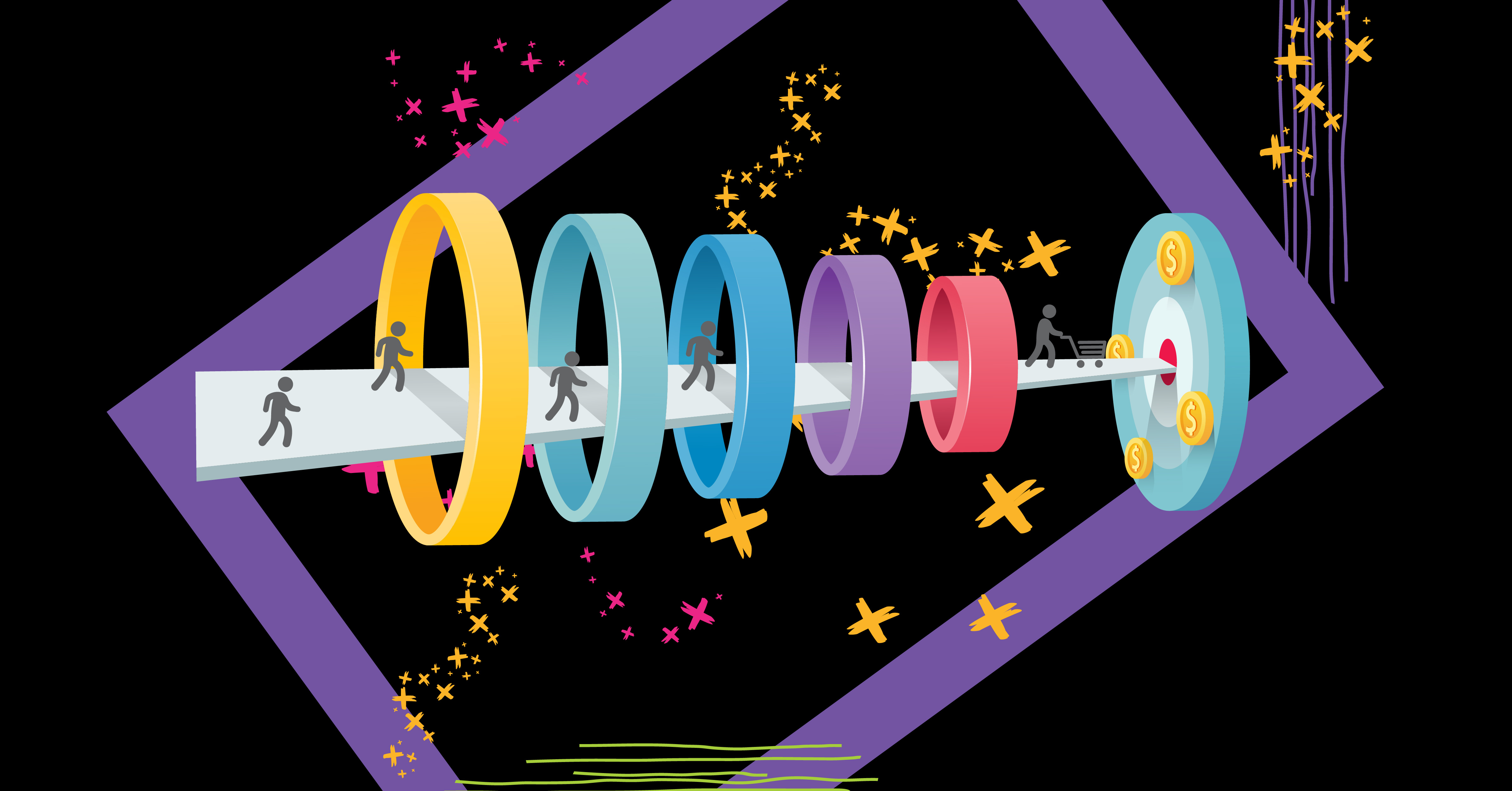Converting leads into happy customers is always the ultimate goal, and that’s where the marketing funnel comes in to help streamline processes and keep things in check. Considering the competitive digital landscape of recent years, understanding and optimising the marketing funnel is essential for guiding potential customers from initial awareness to final conversion, as it represents the stages a customer goes through before making a purchase decision. By tailoring your strategies to each stage of the funnel, you can enhance customer engagement, increase conversions and maximise your marketing efforts.
What You Need To Know About The Funnel Stages
Awareness Stage: The awareness stage is where potential customers first encounter your brand. They might come across your content through search engines, social media or advertisements, and the goal is to capture their attention and make them aware of your products or services.
Strategies for the Awareness Stage:
- Content Marketing: Produce high-quality, informative content that addresses the interests and pain points of your target audience. Blog posts, videos and infographics can be particularly effective.
- SEO: Optimise your content for search engines to ensure it ranks well for relevant keywords, driving organic traffic to your site.
- Social Media Advertising: Use social media platforms to reach a broader audience. Craft engaging ads that highlight your brand and its value proposition.
Consideration Stage: In the consideration stage, potential customers are evaluating their options and considering whether your product or service meets their needs. This is a critical phase where you need to build trust and provide value to move prospects closer to making a decision that is beneficial to your business.
Strategies for the Consideration Stage:
- Email Marketing: Nurture leads with targeted email campaigns that provide valuable information and address their specific needs. Personalise the content based on the customer’s previous interactions.
- Remarketing: Retarget users who have visited your website but have not yet converted. Use personalised ads to remind them of your offerings and encourage reconsideration.
- Customer Reviews & Testimonials: Showcase positive reviews and testimonials to build credibility and trust. Consider offering incentives for customers to leave feedback.
Conversion Stage: The conversion stage is where potential customers make a purchase or take a desired action towards your business. The goal here is to make the process as smooth and compelling as possible to maximise conversions.
Strategies for the Conversion Stage:
- Clear CTAs: Include clear and compelling calls-to-action in your marketing materials, such as graphics and copy. Whether it’s “Buy Now”, “Sign Up” or “Request a Demo”, ensure your CTA prompts immediate action.
- Limited-Time Offers: Create a sense of urgency with limited-time discounts or promotions. Highlight the benefits of acting quickly to encourage decision-making.
- Simplify the Checkout Process: Streamline the checkout process by removing unnecessary steps and providing multiple payment options to minimise friction and ease the purchase experience.
Marketing Funnel Metrics You Should Measure
1. Cost per acquisition (CPA): CPA measures the cost of acquiring a new customer. It’s essential to monitor it to ensure your marketing efforts are cost-efficient. A lower CTA indicates a more effective funnel.2. Customer lifetime value (LTV): LTV predicts the total revenue a customer will generate over their lifetime. By comparing LTV to CPA, you can assess the profitability of your customer acquisition efforts.
3. Conversion rates: Conversion rates track the percentage of visitors who complete a desired action, such as making a purchase or filling out a form. High conversion rates indicate effective marketing strategies and user-friendly experiences.
4. Conversion rate per channel: This metric measures the effectiveness of each marketing channel in driving conversions. By analysing conversion rates per channel, you can allocate your budget more effectively and focus on the most profitable channels.
7 Tips For Optimising Your Marketing Funnel
1. Identify and segment your target audienceUnderstanding your target audience is crucial for funnel optimization. Segment your audience based on demographics, behaviours, and preferences to tailor your marketing efforts and provide a more personalised experience.
2. Create content for every stage of the funnelDevelop content that addresses the needs and interests of your audience at each stage of the funnel. Provide valuable information during the awareness stage, detailed comparisons during the consideration stage, and compelling offers during the conversion stage.
3. Capture leads by offering incentives to potential customersOffer incentives such as free trials, discounts, or valuable resources in exchange for contact information. This helps you capture leads and nurture them through the funnel.
4. Optimise your landing pagesEnsure your landing pages are optimised for conversions. Use clear headlines, concise copy, compelling CTAs, and a clean design to keep visitors focused and encourage them to take action.
5. Use compelling CTAsCraft CTAs that are clear, compelling, and relevant to the content. Test different variations to determine which CTAs perform best and drive the most conversions.
6. Have an active social presenceMaintain an active presence on social media to engage with your audience, share valuable content, and build relationships. Social media can drive traffic to your website and move prospects through the funnel.
7. Measure and analyse your performanceRegularly track and analyse your marketing funnel metrics to identify areas for improvement. Use tools like Google Analytics and marketing automation platforms to gather data and gain insights into your funnel's performance.
Optimising your marketing funnel for the customer journey that applies to your business is essential for driving conversions and growth. By understanding the different stages of the funnel, measuring key metrics and implementing targeted strategies, you can create a seamless and effective customer journey. Continuously refine your approach based on data insights and customer feedback to ensure ongoing success in your marketing efforts.
SOURCES:
https://matomo.org/blog/2024/01/conversion-funnel-optimisation/
https://www.hotjar.com/marketing-funnel/#measuring-the-success-of-your-marketing-funnel
